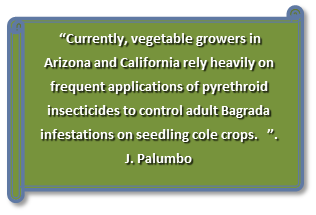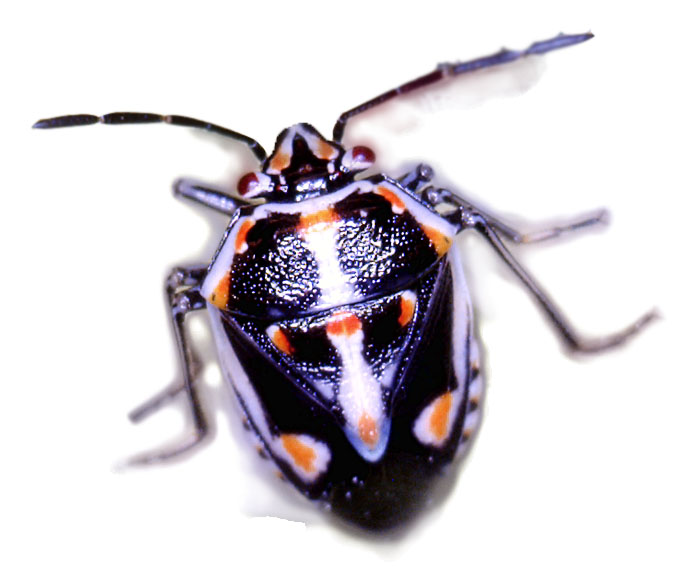
Since the bagrada bug became established in the desert in 2010, growers and PCAs
quickly found that preventing excessive feeding damage on newly-established crops
is critical to economic broccoli production. Local surveys have estimated that the
invasive stink bug annually infests more than 80% of the acreage in Arizona and
southern California, resulting on average in more than 10% stand losses and plant
injury to direct-seeded broccoli crops. The potential for the pest to cause significant
crop losses coupled with the lack of biological control alternatives has left little
alternative but to control outbreak populations with foliar applied insecticides.
Furthermore, because bagrada bug can quickly cause significant feeding damage to
seedling plants, effective insecticide treatments applied in the field need to be
quick acting. Currently, vegetable growers in Arizona and California rely heavily
on frequent applications of pyrethroid insecticides to control adult infestations
on seedling cole crops. Given the magnitude of pyrethroid usage historically applied
to desert vegetable crops, alternative insecticides will be needed to protect desert
cole crops from bagrada bugs and conserve the pyrethroid chemistry. Among the newer
classes of chemistry, foliar-applied neonicotinoids such as Venom/Scorpion have
been shown to effectively control bagrada bug adults, but at-planting, soil systemic
applications of neonicotinoids such as Admire Pro, Belay and Venom do not prevent
bagrada bug from damaging seedling broccoli plants. However, in other parts of the
world neonicotinoid seed treatments have been shown to provide protection against
bagrada bug. For example, in India, field trials showed that planting mustard seeds
treated with imidacloprid resulted in significantly lower plant damage due to bagrada
bug. Recently, Valent U.S.A. registered clothianidin as a seed treatment on broccoli
under the name of Nipsit®. Based on our research, this technology provides another
tool for broccoli growers to use in their annual battle against bagrada bugs in
the desert. The results of field trials conducted at the Yuma Ag Center from 2012-2014
that evaluated the effectiveness of Nipsit (clothianidin) seed treatments for preventing
bagrada bug feeding damage and yield loss in broccoli can be found in
Evaluation of Clothianidin Seed Treatments for Bagrada Bug Control in Broccoli.




